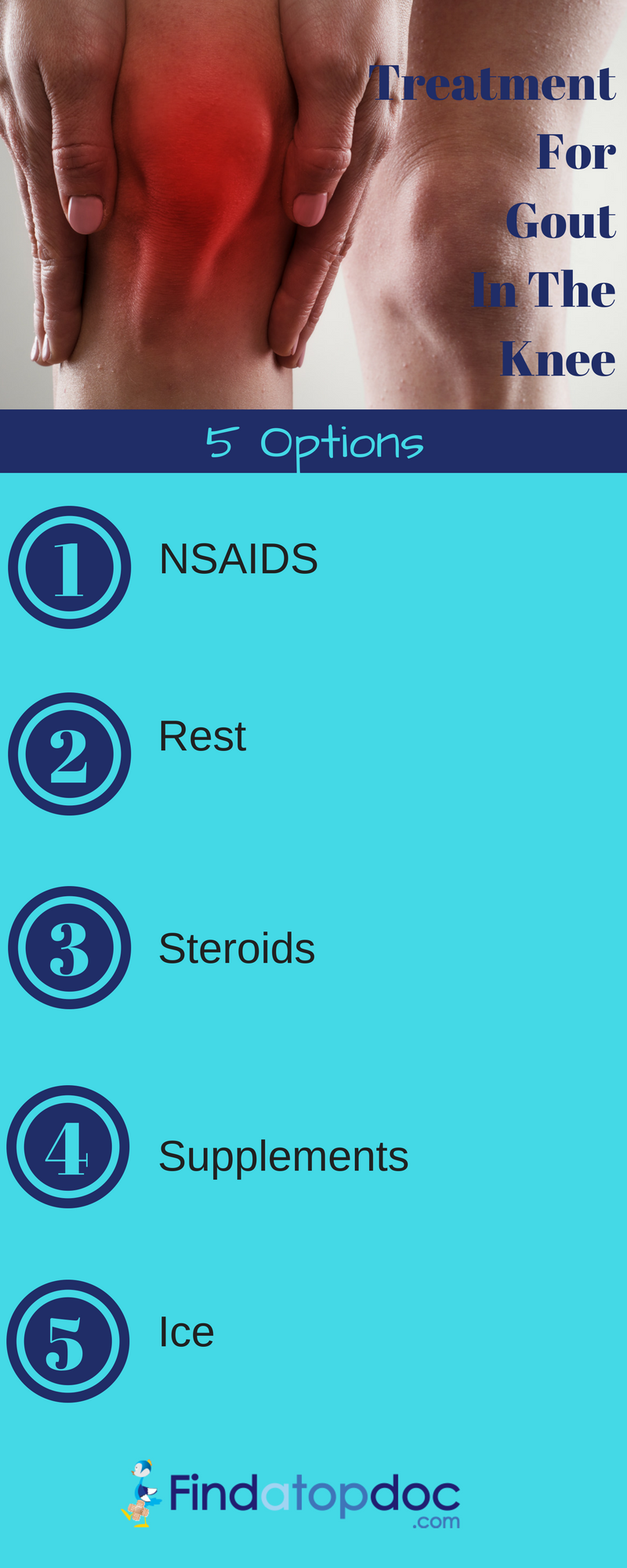Gout in knee is an inflammatory condition of the joint leading to swelling, pain, and redness of the knee. Gout is a complex form of arthritis that can affect absolutely anyone. Men are documented as having the condition more often, but postmenopausal women become very susceptible as well in their later years. It is estimated that about one million Americans are affected by gout pain each year. The most common joint affected by gout is the big toe, but joint pain may also be experienced in the knees, hands, ankles, and wrists.

Source
An excess of uric acid in the blood brings on gout. Uric acid comes from two places - produced by the body and from the diet. Any extra uric acid usually filters through the kidneys and gets passed in urine. If the body produces too much uric acid or fails to excrete it in the urine, crystals of monosodium urate form in the joints and tendons. These crystals cause intense inflammation eventually leading to pain swelling and redness.
Gout symptoms usually start at night due to lower body temperatures. The joint becomes hot, swollen and red and becomes very sore. The skin around the joint often looks shiny and there may be small, firm lumps under the skin. Sometimes, gout causes a fever. Left untreated, it settles down after a couple of weeks. Gout knee often makes weight bearing activities such as walking incredibly painful. Repeat episodes are common and most people will suffer a recurrence anywhere from 6 months to 2 years later. 60% of gout sufferers will have a recurrence within 1 year.
Medications for the treatment of gout usually fall into one of three categories: uric-acid-lowering medications, prophylactic medications, and rescue medications to provide immediate relief from gout pain. Urate-lowering medications are the primary treatment for gout. These medications decrease the total amount of uric acid in the body and lower the serum uric acid level. For most patients, the goal of uric-acid-lowering medication is to achieve a serum uric acid level of less than 6 mg/dl. These medications are somewhat effective treatments to decrease the size of tophi, with the ultimate goal of eradicating them.

Source